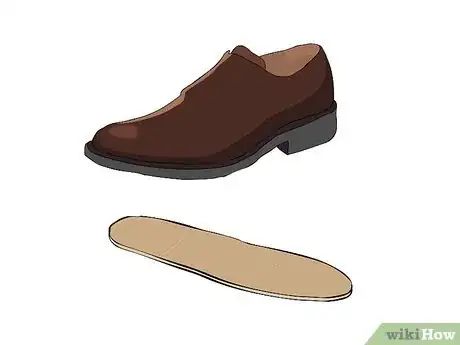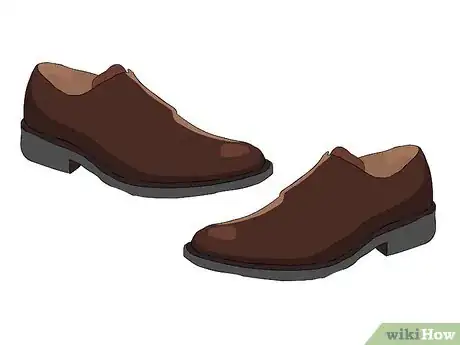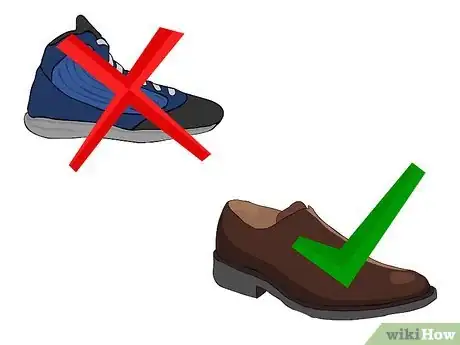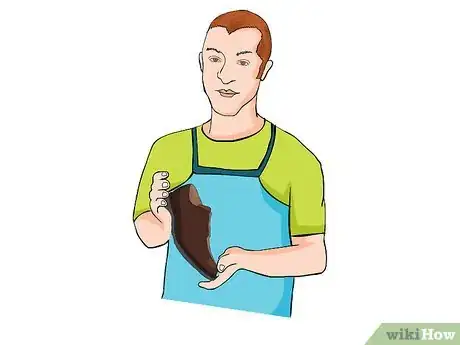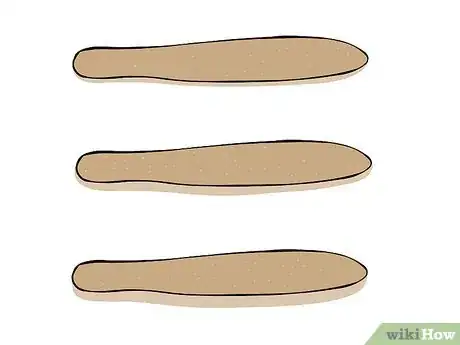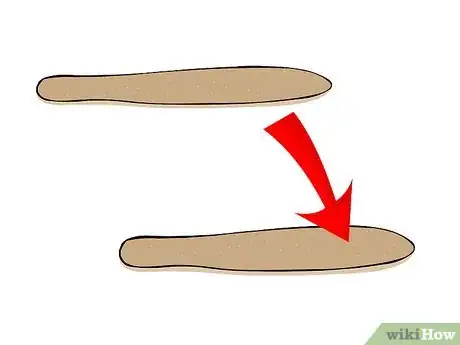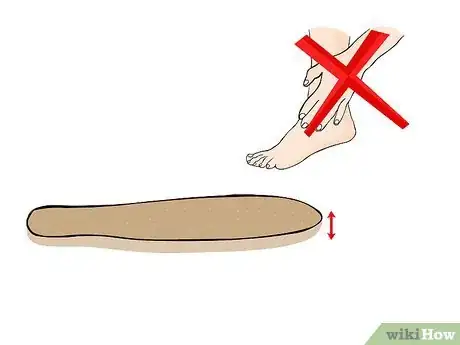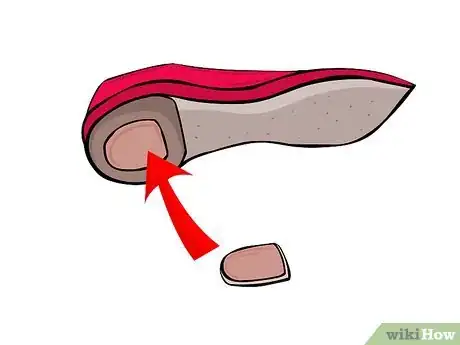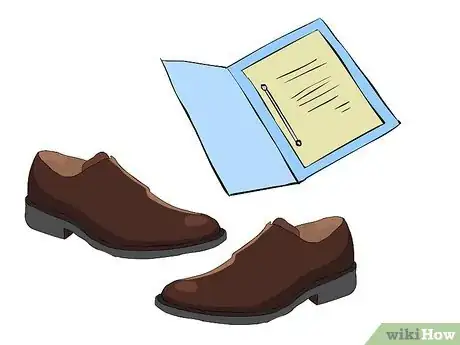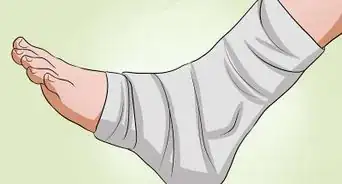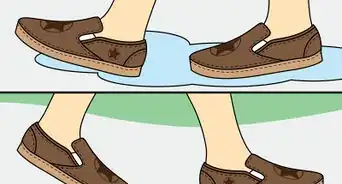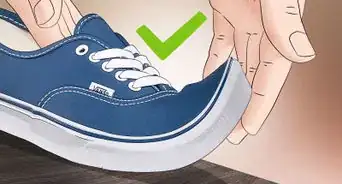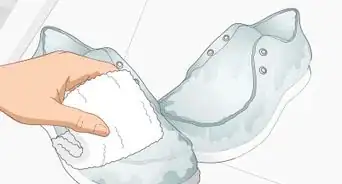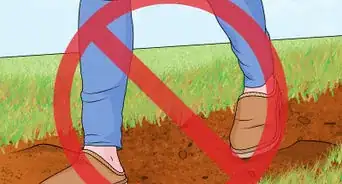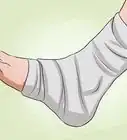X
This article was co-authored by Carroll Kelly. Carroll Kelly is a Shoe Care Specialist and the Owner of Austin Shoe Hospital in Austin, Texas. With over 37 years of experience, Carroll specializes in sustainable shoes, boots, belts, handbags, and luggage repair. Carroll graduated with a Bachelor’s degree from the University of Texas. Austin Shoe Hospital is a family-run business that started over 105 years ago from a single horse-drawn carriage. Today they are the largest and most recognized shoe repair company in the world.
This article has been viewed 160,157 times.
Resoling your footwear, similar to the original sole, is economical. Custom resoling your footwear costs virtually the same and adds a lot of comfort.
Steps
-
1Consider benefits and disadvantages of resoling your footwear.
- It is economical, a resole job should be about half the cost of a new footwear.
- Your shoes do not have to be broken in, it will be comfortable. Shoes that have already been worn have conformed to upper part of your feet. The under sole can be customized to: a softer density sole, heel height change etc.
- Comfort can be costly too. A softer density undersole will wear out faster - a negative. A positive is you will be happier when your feet do not hurt.
- The main disadvantages of resoling a shoe is the thought, that is required, in deciding how to do a resole and the time it takes to decide and take notes.
-
2Use a name brand shoe for resoling; they are durable and well made. Good quality and well maintained shoes can last many years. Leather cracks if it is not treated with shoe polish.Advertisement
-
3Do simple resoling. The majority of shoes can be resoled. Certain jobs like resoling athletic shoes, like basketball shoes, cannot be done because most shoemakers will not have experience with lateral reinforcement of shoes and not have the materials for repair on athletic shoes.[1]
-
4Choose a shoemaker. Since the price will not vary much for resoling, choose the shoemaker with the most skills. A shoemaker who has the ability to make shoes from scratch is an excellent choice. Also, note the amount of materials and machines in the shop.
- To resole the shoe, like when it was bought, is very simple for the shoemaker to do and follow directions. The shoe repair person has a lot of clients and will not remember, like you can, the details of the past repairs for you. Your directions must be in detail and exact (quantified).
-
5For comfort, resole the footwear with a medium density material. A soft density material is the most comfortable but wears out fast. At the other end, a hard density material is very durable but very uncomfortable. Compromise between cost and comfort.
-
6For more comfort, add an 1/8 or a 1/4 of an inch to the new sole. This will add greatly to comfort. From heel to toes make the undersole 1⁄8 inch (0.3 cm) thicker at the very least.
-
7Be concerned about ankle stability. A very thick sole, more than an 1", is very comfortable yet there is a greater chance of ankle injuries. A shoe that is high protects the ankle. A thick sole does not flex, making walking unnatural. Adding a 1⁄8 inch (0.3 cm) will not decrease the flex of the shoe and will not increase the possibility of ankle injury - unless the sole is already very thick.
-
8Have the shoemaker put on a small piece, 1/4" thick, of very high density rubber at the most rear part of the heel for durability.
-
9Change the heel, if necessary. With a lower heel, the foot does not slide to the front and get jammed there. A lower heel may also alleviate back pain. A higher heel instead of a heel cup will reduce or eliminate heel pain. Proper walking technique, without excessive dorsiflexion, even with a low heel, can reduce or eliminate heel pain of this type (where heel elevation reduces pain).
-
10Consider spot patching. If just a small part of a shoe is worn such as the very front or heel, the shoemaker can patch that area. Polishing the shoe and the sole covers the patch marks.[2] Patch jobs costs less than resoling.
-
11Keep notes for future reference when having custom shoe work done. Organize your notes and keep it in a file chronologically. Draw an outline of both shoes and note the wear patterns. Record the directions given to the shoe repair person. Finally, make other pertinent notes.
Advertisement
Community Q&A
-
QuestionHow can I mend the soles of my shoes?
 Community AnswerPurchase "Shoe Goo" (you can get it at Target or on Amazon, among other places). Spread it where the damage to your shoe has occurred, and set a weight on top of the shoe. Let it dry for a full day. It'll be better than when you started.
Community AnswerPurchase "Shoe Goo" (you can get it at Target or on Amazon, among other places). Spread it where the damage to your shoe has occurred, and set a weight on top of the shoe. Let it dry for a full day. It'll be better than when you started. -
QuestionThe rubber part of my converse is falling off. How can I fix that on my own?
 Jwlhyfer Karnstien de WinterCommunity AnswerAs long as the sole is not too worn down, you should be able to glue it. (There are glues made to repair shoes specifically that you can purchase.) Use the glue in a well-ventilated space and apply it carefully, following the directions on the tube.
Jwlhyfer Karnstien de WinterCommunity AnswerAs long as the sole is not too worn down, you should be able to glue it. (There are glues made to repair shoes specifically that you can purchase.) Use the glue in a well-ventilated space and apply it carefully, following the directions on the tube. -
QuestionThe sole on one of my shoes is damaged, and I will need to resole it. Should I replace the soles on both shoes?
 Community AnswerYou should replace both to ensure both feet will feel comfortable throughout the day.
Community AnswerYou should replace both to ensure both feet will feel comfortable throughout the day.
Advertisement
References
About This Article
Advertisement
